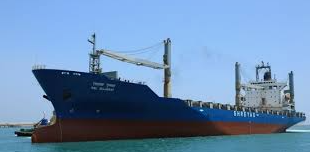Intro
India’s maritime industry and Indian flag vessels is important for the growth of trade, energy supply in addition economic development. India, with 7,500 km (4,660 miles) of coastline too a dominant share in global trade routes, relies seriously on sea transportation intended for exports and imports. Projects such as Sagarmala and Maritime India Vision 2030 are placing emphasis on port modernization, coastal development also industrial pull.
India’s merchant fleet in terms of Gross Tonnage (GT) stood at 13.7 million GT as compared to 1088.07 million tons of cargo it handled by FY 2022-23. However, growth also brings challenges. A major concern one is the environmental sustainability, as older ships emitted more of the pollutants and demanded higher maintenance. The current World wide’s age, is approximately of 22 years old, which shows a clear need for renovation.

Why Was DGS Order No. 06 of 2023 Introduced for Indian flag vessels?
DGS Order No. 06 of 2023 prescribes the age restrictions for Indian registered ships as per their gross tonnage. Its primary objective is to enhance safety, environmental protection and India’s flag to be brought at par with global shipping standards as laid down in International Maritime Organisation (IMO).
This order also demonstrates India’s broader determination to move toward net-zero emissions and modernize its fleet. It will see older, more polluting ships being replaced and provide an incentive for owners to invest in safer, cleaner ships.
For official information, visit the Directorate General of Shipping
What was the Process Used to Review the Order relayed to Indian flag vessels?

The study that evaluated the effect of the order employed both qualitative and quantitative methods:
- Interviews: Semi-structured conversation with actors involved – shipowners, classification societies, technical managers and legislators.
- Analysis: Review of Shipping Records with Emphasis on Vessel Age, Safety Performance, Emissions, Operating Costs.
- Scenario Modeling: Modeling was used to estimate long term operational and fiscal implications of varying age restrictions.
This process allowed us to arrive at a data-driven, comprehensive assessment on the order’s impact of safety, sustainability and economic performance of indian Flag Vessels.
Why is ship age so important for safety of Indian flag vessels?
- The most noticeable result is the association of vessel age and safety of indian Flag Vessels..
- According to PSC/FSI statistics from the Directorate General of Shipping:
- Among vessels older than 20 years, the average DI is 5.34, in comparison to 1.63 for newer ships.
- Among the older vessels in this fleet, the Nil Deficiency Rate (NDR) is only 12.5%, suggesting a regular occurrence of safety problems and detentions.
- Older vessels are usually affected by corrosion and outdated gear, with structural fatigue also present — which makes them more risky and costly to maintain. These figures help to highlight why there needs to be age norms in fleet replacement.
What are the environmental issues around running older vessels related to Indian flag vessels?
The DGS Order is a fundamental component of environmental sustainability. Older ships that is indian Flag Vessels. generally burn more fuel and emit more CO₂.
The OPEX for such ships can increase significantly when carbon pricing (applying penalties of USD 150-380 per tonne of CO₂ as suggested at MEPC 83) comes into effect. This renders them uneconomical in the long run.
Simulation models show that ships older than 25 years, apart from being low efficient are non-compliant with decarbonization goals. This is an added argument for fleet renewal and environmental shipbuilding. Learn how to go about starting a maritime training institute
Stakeholders’ Reactions to the Age Norms
The report revealed that opinions were split between stakeholders:
- Extent of concerns Capital cost, asset depreciation and loss of capacity were among the greatest worries for comms managers.
- Technical officers, including classification societies and ship superintendents, also recommended the order because of continuing safety hazards and the absence of any practical way to refit old ships.
- This underscores that while industry acknowledges the technical necessity of the policy, economic issues must be resolved with financial inducements and clear regulation.
Review the requirements for a document of compliance certification
What Policy Scenarios Were Evaluated related to Indian flag vessels?
Three policy alternatives were assessed to find a good compromise between regulation and reality:
- Age Limit: Immediate implementation of a cap on vessel age.
- Alternating Phase: A pull-the-plugs method of cycling out your oldest vessels.
- Age norms anchored at performance.
Of these, Scenario 3 provided the best performance. It has impinged upon only 4.99% of the country’s meagre overall GRT, extending to high risk end-of-life indian Flag Vessels. but ensuring that even ships tested as aging but acceptable continue to operate at full pace.
It also helps shipbuilding demand and ship recycling industry the government’s endeavor to make India a green maritime hub.
How does the Safety and Sustainability Index (SSI) Support the recount of Indian flag vessels??
The study suggests creating a Safety and Sustainability Index (SSI) to preserve fairness and flexibility.
This index would:
- Permit well kept, compliant older ones to run on with conditions of extension.
- Establish a performance-based system for determining the fitness of vessels.
- The stockpile also serves to incentivize adoption of cleaner technology and avoid abrupt fleet shortages.
SSI serves as a compromise between safety assurance and operational sustainability, which makes the decree more flexible and stakeholder-sensitive.
What are the financial gains of this age cap policy related to Indian flag vessels?
The order probably raises now–replacement costs at first, but it promotes long-term economic gain:
- Provides a shot in the arm to domestic shipbuilding and recycling.
- Reduces fuel and maintenance expenses.
- Increases fleet efficiency by replacing wasteful tonnage.
- Brings in foreign money from better safety and compliance records.
It also allows India to project itself as a responsible maritime nation with an active role in steering the global maritime agenda towards sustainability. Learn about DG shipping RPSLl
Why Is This Order a Fulcrum for India’s Maritime Future and to Indian flag vessels?
The DGS Order No. 06 of 2023 is a significant development in India’s Maritime Administration. It is scientifically and economically rational and ethically supported by national and international policy.
Through imposition of age limits, India will:
- Protect the youth from becoming addicts.
- Enhance maritime safety.
- Lower carbon emissions.
- Promote fleet modernization.
- Strengthen agreement with IMO standards.
This policy will not only re-energise India’s merchant fleet but also demonstrate New Delhi’s steadfastness towards green maritime development.
Final Thoughts
The Indian flag age bar is much more than a mere regulatory action; it signifies a strategic shift. It enhances security, lowers emissions and promotes environmentally sustainable maritime growth.
Establishing a maritime education institution in India is subject to stringent regulation and capital requirement, including obtaining approval from the Directorate General of Shipping (DG Shipping), as well as often being affiliated with the Indian Maritime University (IMU).
The first step should be the creation of a non-profit organisation (a Section 8 Company or Public Trust) with marine education as its prime objective. The basic variance in compliance is of course the type of course: Post-Sea (short modular) courses necessitate a minimum area of approximately 5,000 sq. ft. of floor space with hostel & practical area and Pre-Sea (long-term) courses need an exclusive campus of atleast 10 acres, equipped with hostel(halls), with independent labs of approx 3,000 sqt. ft. each for Physics, Chemistry & Workshop etc.
The documentary requirements, project feasibility report (PFR), the funding for capital and recurrent costs ranging from ₹80 lakh to just over ₹3 crore —deposit 25 per cent of the total cost with National Maritime Board (NMB)—all local authority approvals pertaining land/building and faculty compliance with DGS norms for mandatory sea-service/ training qualifications (like VICT course) are needed for applying to set up a maritime institute after which final approval is given post on-the-spot inspection by DG Shipping of indian flag vessels.
There is a win-win for India64 in this equation, and approaches to performance assessment, technology and the environment could make Is fleet rejuvenation path-breaking by global standards as far as maritime reform goes regarding indian flag vessels. Learn more about the maritime industry, how to start a maritime institute here!
FAQs
What’s DGS Order 06 of 2023?
“It’s an order of the Directorate General of Shipping to limit age on Indian-flagged ships for safe and sustainable shipping.
Why are older ships being retired?
Older ships are less harmless, more polluting and ultimately more luxurious to maintain, so they’re not appropriate for long-term service.
What does this decision mean for shipowners?
Though intensified capital for short term, it stimulates modernization, decrease OPEX and support profit in long term.
What does the Safety and Sustainability Index tell you about a product?
SSI enables vessels that are otherwise compliant yet on the cusp to continue trading under conditional extensions, thereby enabling fair play and equilibrium in the capacity.
It supports Maritime India Vision 2030, endorses indigenous shipbuilding, in addition aids India’s net-zero commitments.

